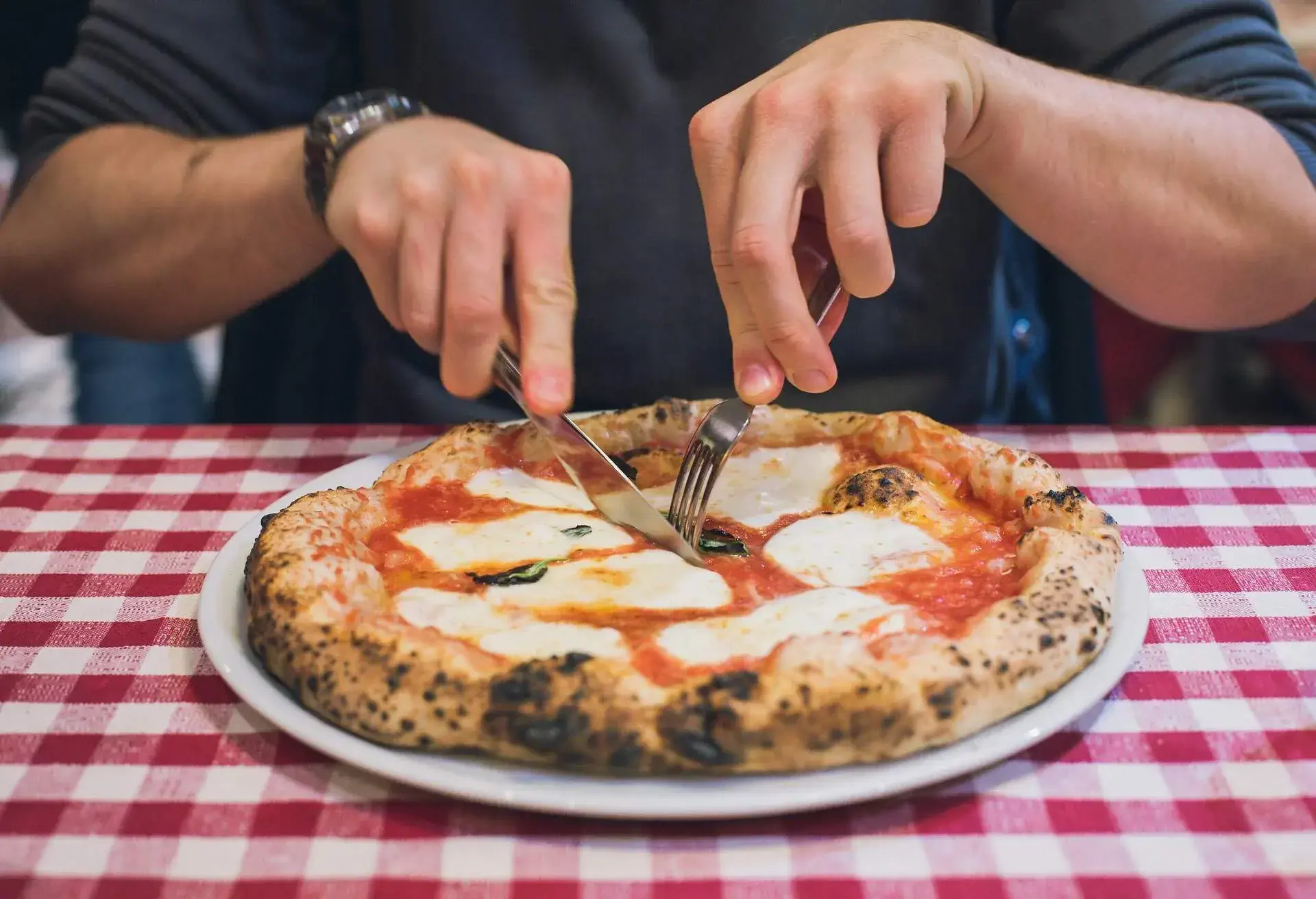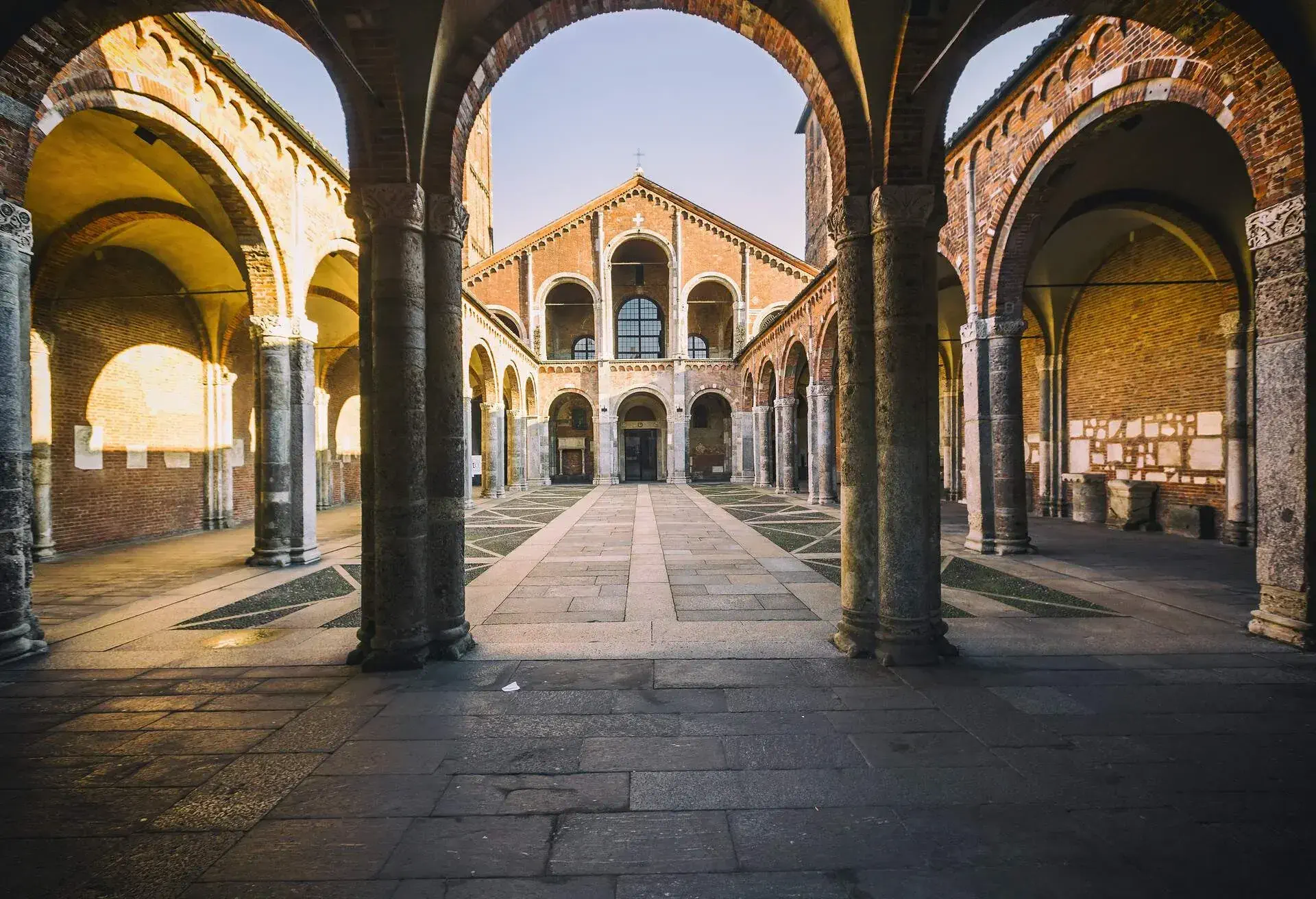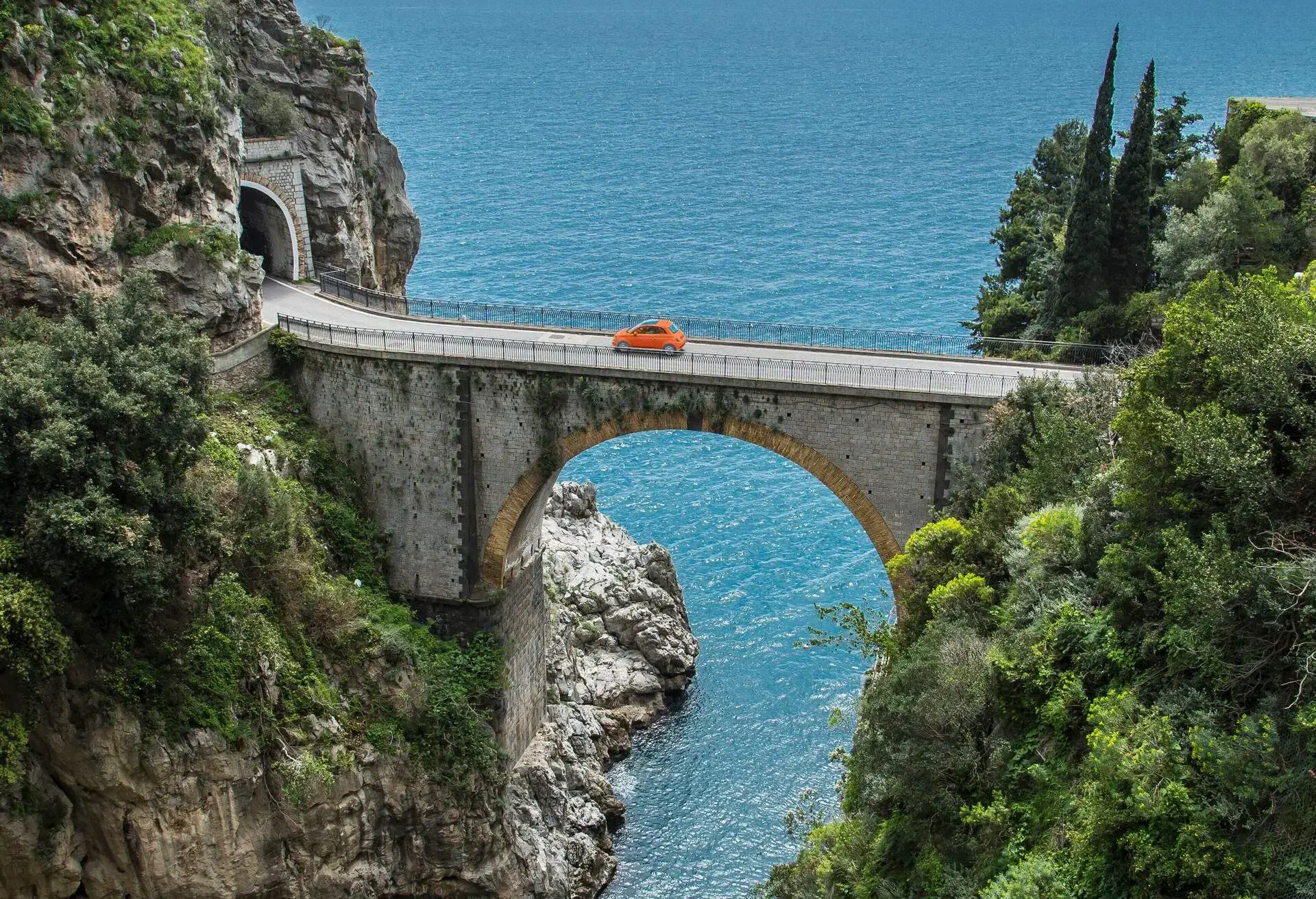In the world’s capital for traditional cuisine, mealtime is a multi-course rite of passage. Preparation techniques and ingredients vary across the regions, but the character and taste of the food are undeniable. Pack your palate and travel with us to uncover the finest Italian food traditions you can enjoy in the company of family and friends.
Italian food traditions: a crash course in how Italians eat
In Italy, there is a collective pause at lunch and dinner when locals flock to cafes and restaurants to enjoy the national pastime: eating. An aperitivo is followed by a multi-course opera. There’s antipasti (the aria), primi piatti, secondi piatti (the overtures), contorni, with dolce and caffe comprising the libretti. Wine plays the role of the chorus (of course!) and the digestivo brings the curtain down.
What exactly do Italians eat?
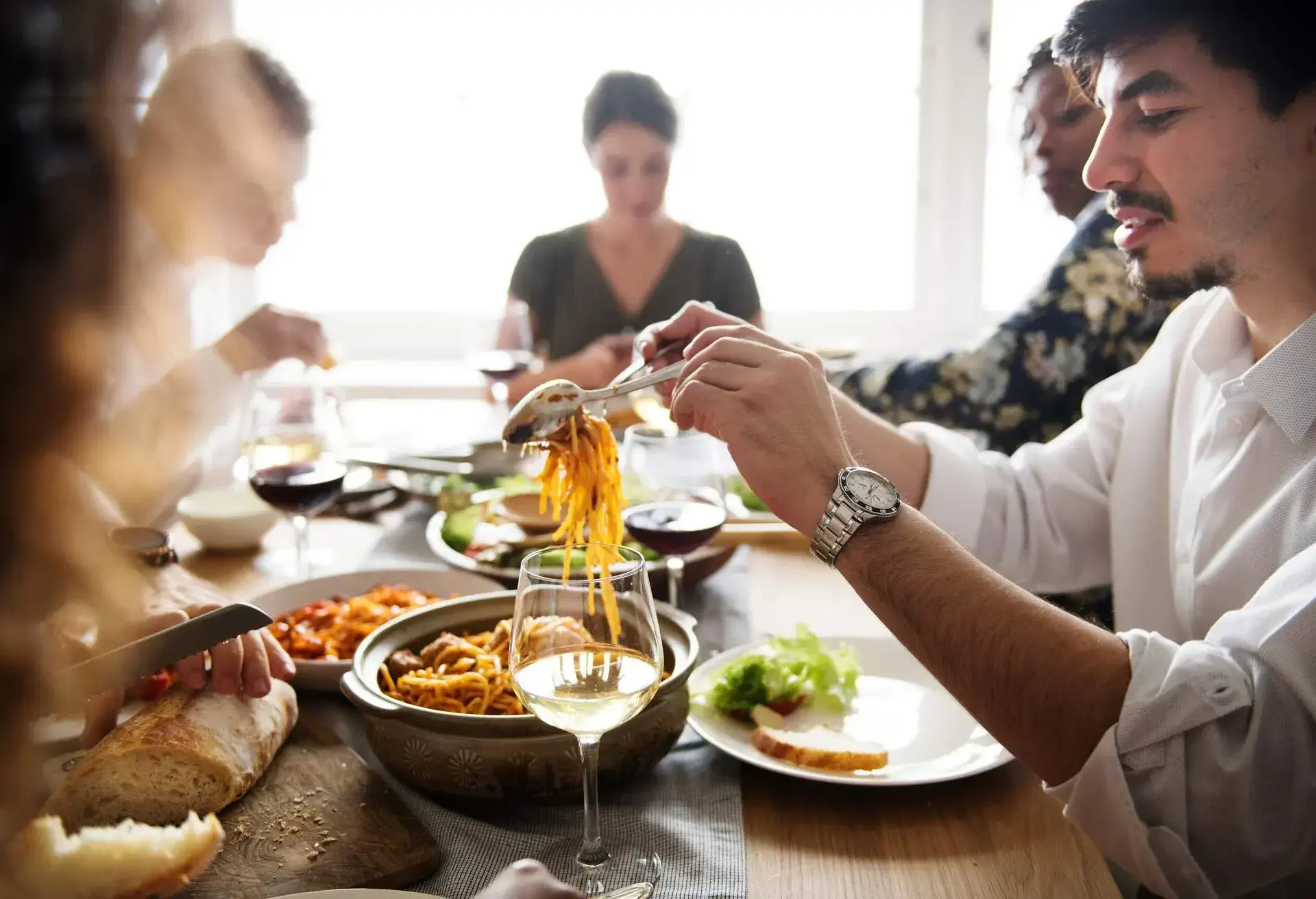
Italians take food preparation and consumption seriously; only the freshest produce is used as ingredients, under/over cooking a dish is frowned upon and using anything other than olive oil is considered blasphemy. On a typical menu, you’ll find a host of delectable pasta choices as well as delicious meat and fish options. Vegetables and leafy greens in addition to varieties of bread and cheese are ever-present, with mandatory sweet desserts such as tiramisu, gelati and cannoli. The typical Italian lunch or dinner is a sensory experience that unfolds over a few hours, like any good opera.
Italian food traditions: set the table with aperitivo
Italians are experts in ways to prepare the stomach for the feasting to follow. What started out as a simple pre-dinner drink has since evolved into a sort of happy hour (usually around 19:00-21:00), and an aperitivo is now as essential to lunch and dinner as the meals themselves. Some establishments have even made their bones specialising in the art of serving this pre-meal ritual.
Savoury snacks and/or a buffet of quiche, pizza and even vegetables are part of the ritual. Many an unsuspecting tourist has often been caught out filling up on finger foods and then struggling at the dinner table, so only digest a few nibbles to do it right. Vermouth is the original aperitif from Turin and though still in demand has been eclipsed by more cosmopolitan drinks like Campari or Aperol spritzers and Negroni.
Italian food traditions celebrate the infinite variety of pasta
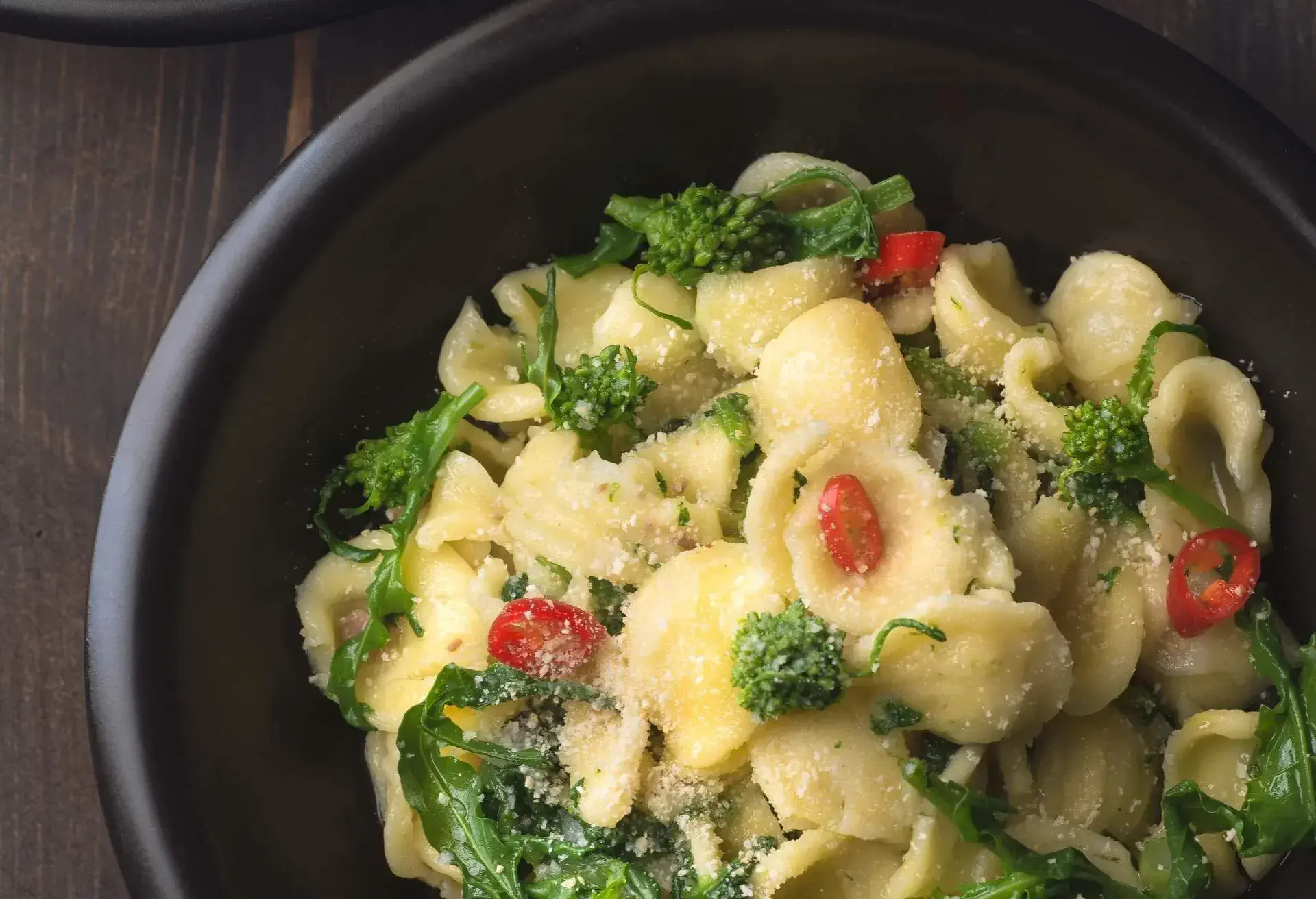
No food defines what it means to be Italian quite like pasta. In this country, the national food appears in such varieties (over 300) that listing them all requires a separate article entirely. For our purposes, consider spaghetti ribbon pasta, which ranges from fine angel hair to thicker fettuccine. Tubular pasta includes penne, ziti and rigatoni, while lasagne is defined by its flat, wavy appearance. Oval-shaped tortellini and pillow-shaped ravioli or agnolotti are usually stuffed with meat and cheese, but these vary according to region and taste.
Most of us are familiar with U-shaped macaroni and bow-tie farfalle, but pasta takes on other surprising shapes like corkscrew fusilli and orecchiette, or little ears. This type originates in Apulia and is not very common outside of Italy, so if you want to try this in its most authentic form, a visit to the capital Bari comes highly recommended.
Italian food traditions: flavour your pasta with sauce
The basic key that makes any good pasta dish is its sauce. In many cases, ragu (as it’s known locally) can define the region of origin and in others can establish a famous custom due to unique recipes and ingredients.
Bolognese sauce: the undisputed king
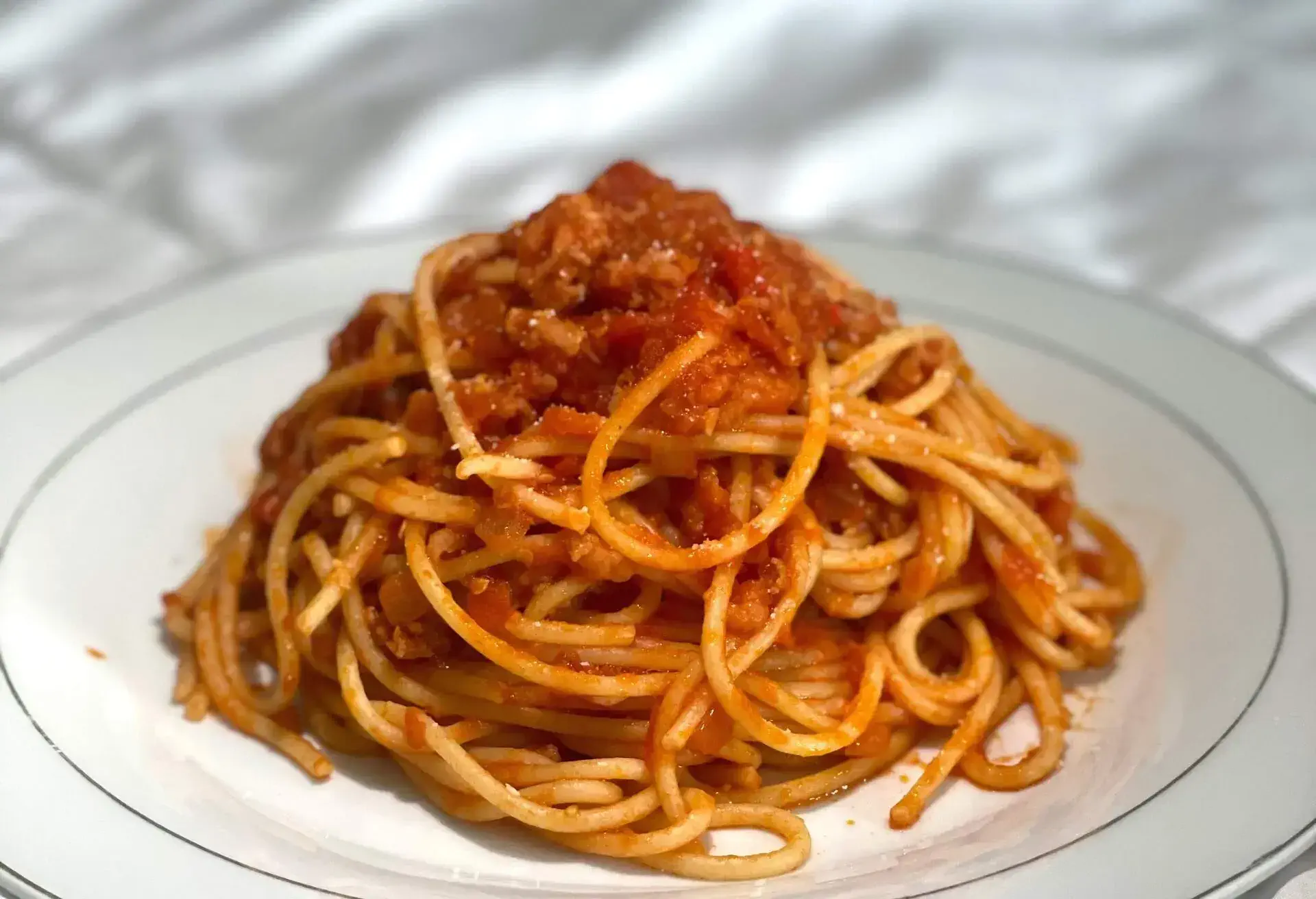
The undisputed king of Northern Italy, Bolognese sauce is the preferred way for most non-Italians to consume pasta, whether you’re talking spaghetti, penne, farfalle or fusilli. Emilia-Romagna is one of the most popular food regions in the country, and this famous sauce made with tomatoes, garlic and minced meat, representing its capital Bologna, is a huge part of that equation.
Marinara sauce: southern supremacy
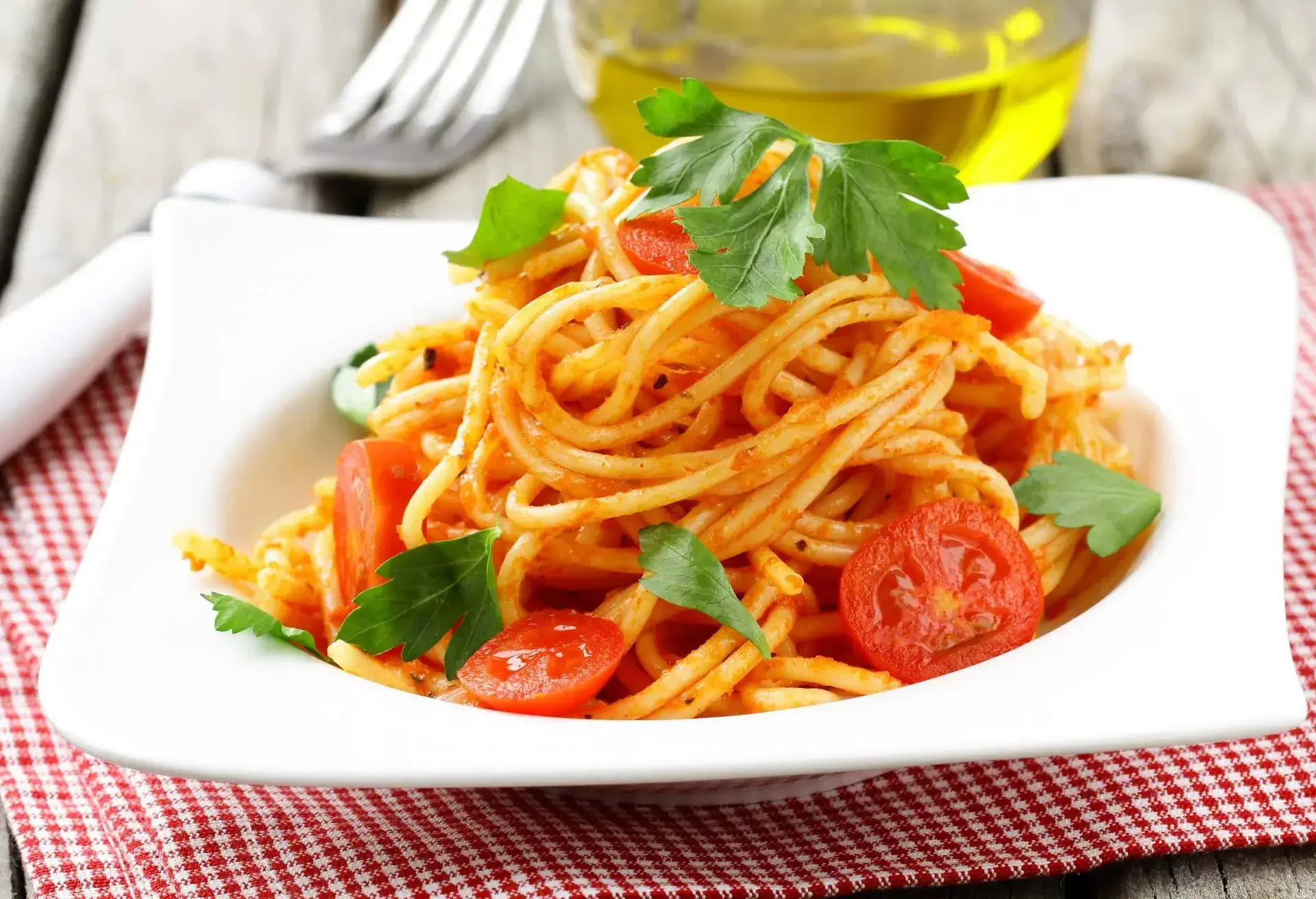
If Bolognese sauce is considered the king of the North, then marinara sauce reigns supreme in the South. The absence of meat extends its popularity to include vegetarians, leading many to argue it is the real king of Italian ragu. Another easy recipe based on tomatoes, garlic and herbs, it takes very little time to prepare and goes well with most types of pasta. Marinara sauce became a staple in the southern port cities of Palermo and Naples before spreading across the country and the globe.
Pesto sauce: aromatic speciality from the North
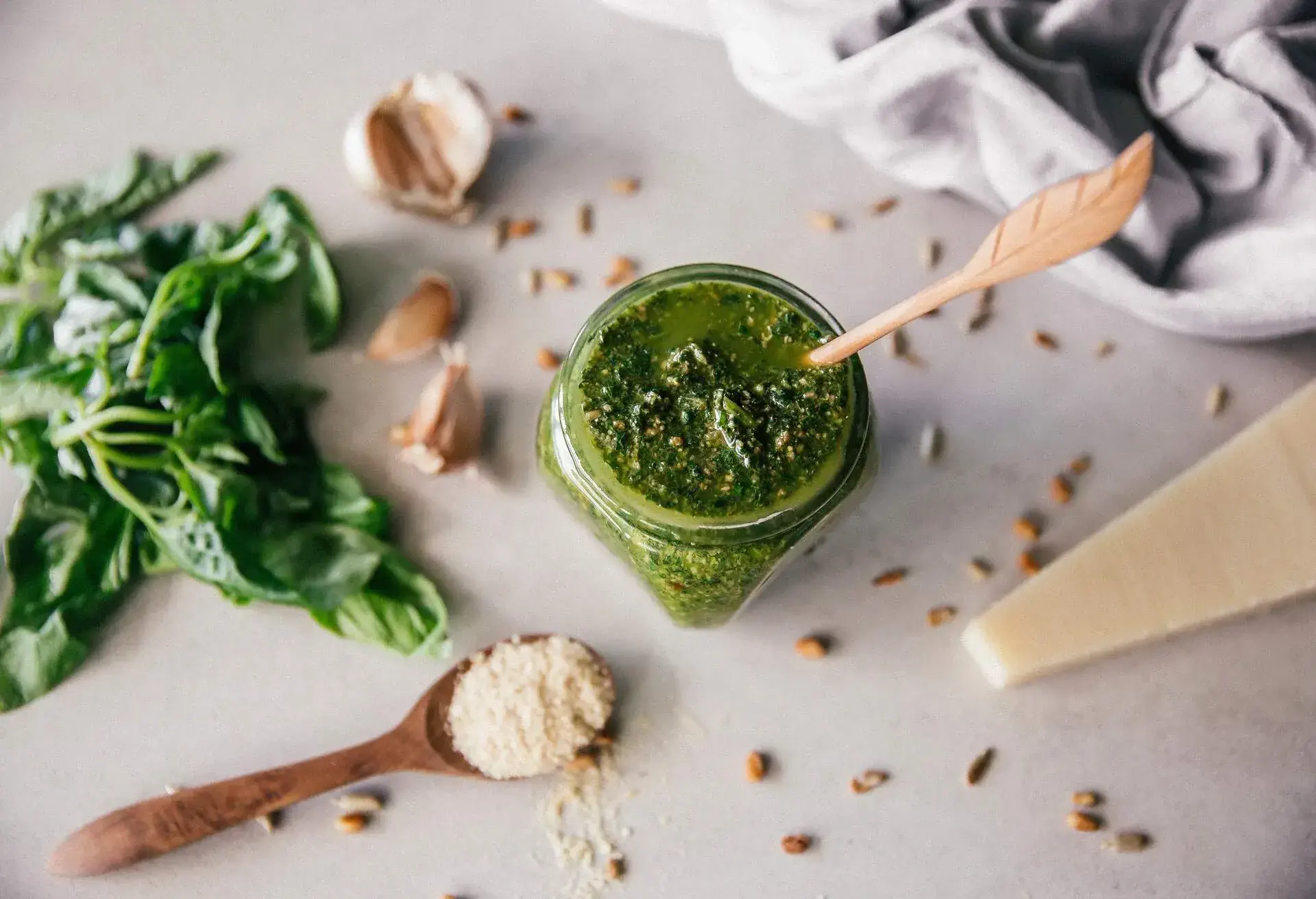
The unmistakable aroma of pesto sauce makes your mouth water long before consuming the first bite. Its colour, richness and texture make it one of the country’s most unique sauces, and it enjoys a faithful following around the world. Made with basil, cheese and olive oil, pesto hails originally from the northern city of Genoa. Along with marinara and Bolognese, it makes up the Big Three of Italian ragu.
Italian food traditions: for the love of meat and fish

Meat, fish and seafood make up a large part of the typical Italian diet. Meat is most commonly consumed in the cured form of la prosciutto and pancetta, or in veal, beef and pork portions. Salami is an extremely popular type of sausage; it has sweet and spicy options made with beef, chicken, pork or veal. Osso buco is a well-known Milanese speciality, while minced beef puts the “B” in Bolognese sauce and “P” in polpette (Italian meatballs).
Italian seafood is the basis of many southern dishes and is also served on platters. Shellfish, such as mussels, shrimp and oysters, can appear as appetisers or chief components of main dishes, such as shrimp risotto and gnocchi or linguine with clams. You can enjoy good Italian seafood in most coastal cities, but if you want the best variety of dishes, there’s no place like Pescara.
Italian food traditions: the famous pizza
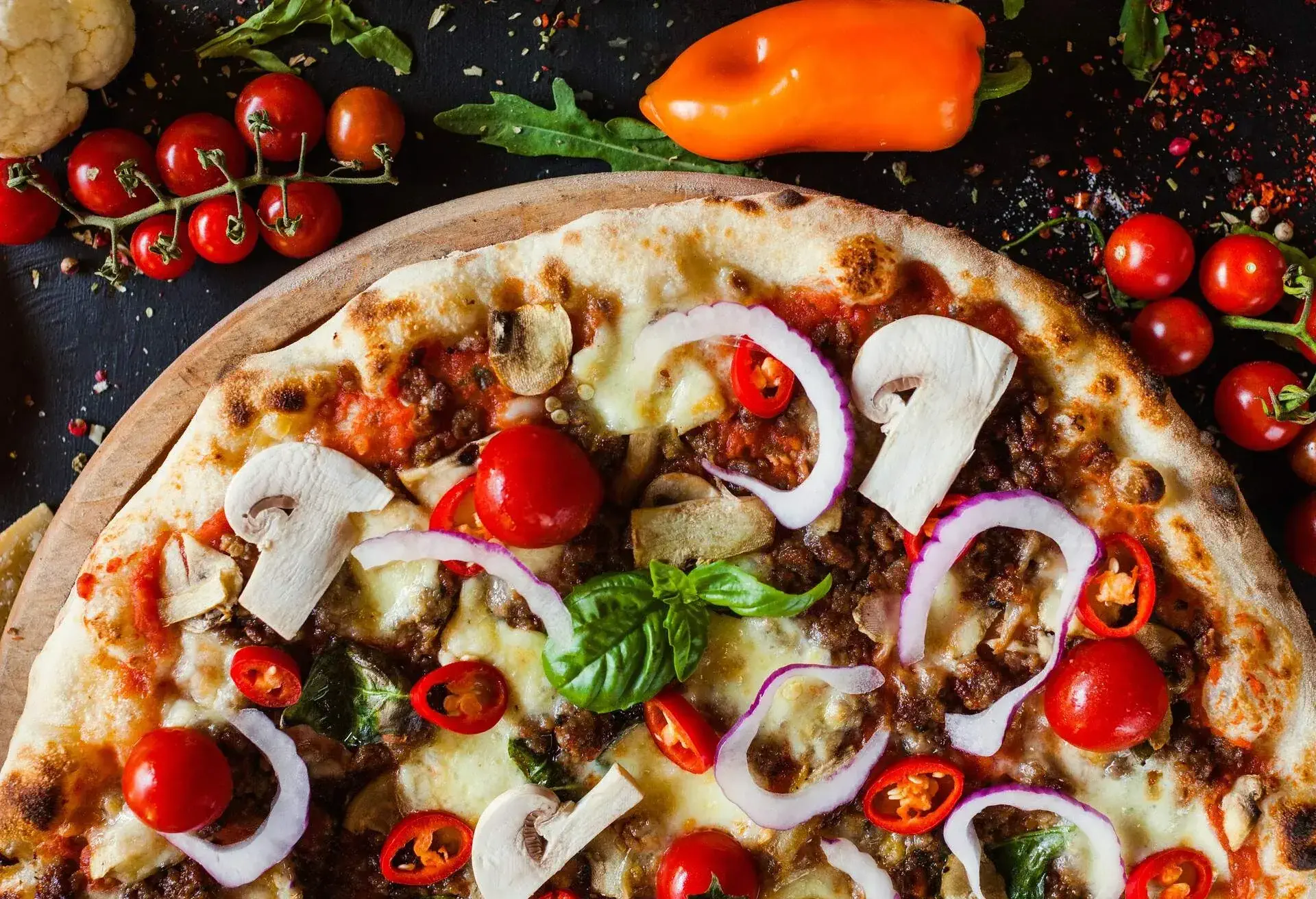
The worldwide popularity of pizza is undeniable, and in Italy, there are several ways to prepare this delicious fast food. Neapolitan style (tomatoes, mozzarella and basil) and pizza marinara (tomatoes, garlic and oregano) are customary pie options, while Sicilian style involves square-shaped slices, all of which enjoy a universal appeal and are often garnished with slices of pepperoni to enhance the taste.
Quattro formaggi is made with four types of cheese, while quattro stagioni treats you to four sections with individual toppings. Focaccia, a traditional Italian shortbread, is very similar to pizza and can be prepared savoury with tomatoes and basil or sweet with raisins and honey.
Italian food traditions: all about cheese
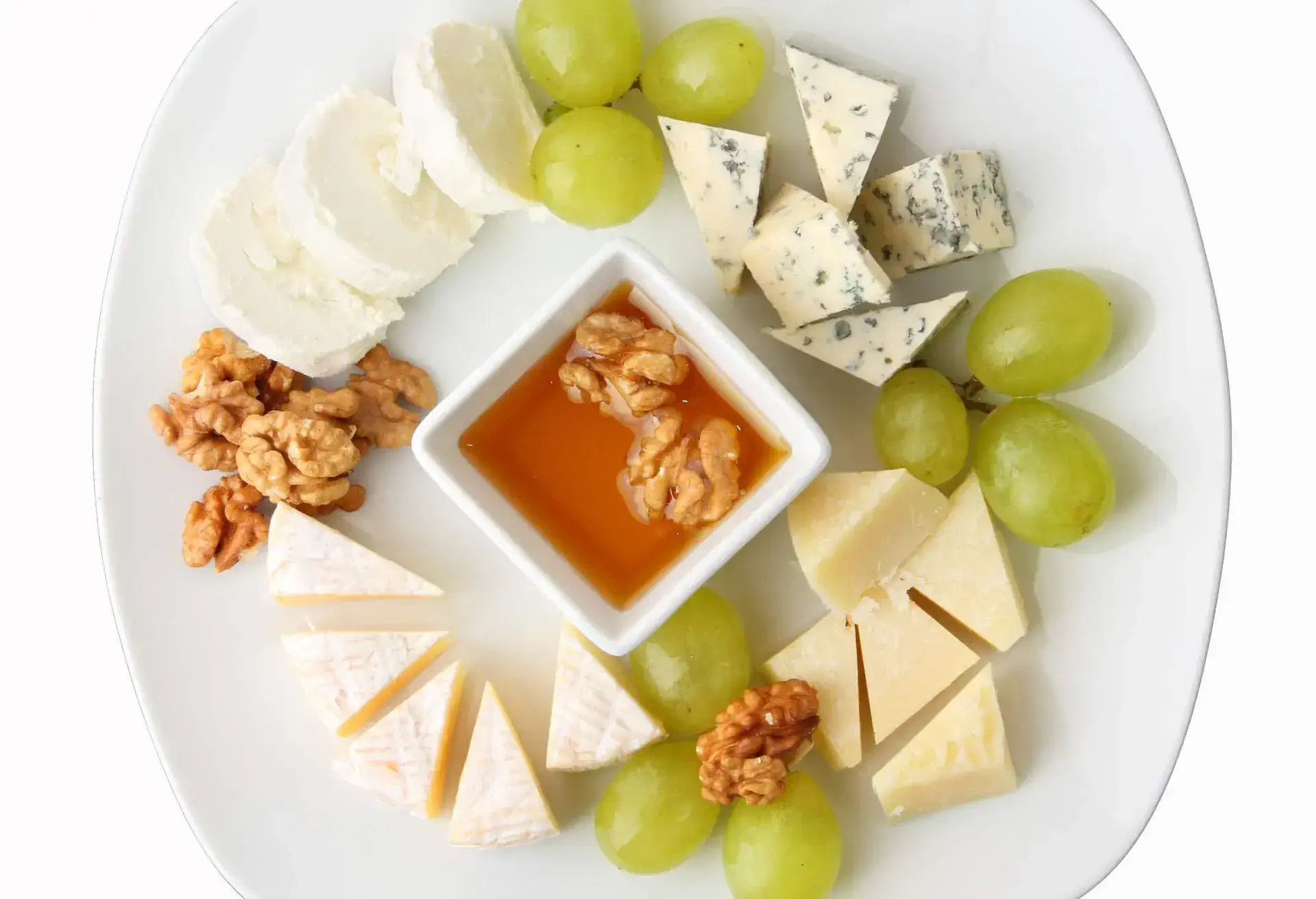
Italian cheese exists within its own universe, with more than 400 types from which to choose. These vary in texture (firm to soft), aroma (pungent to odourless), taste (with/without bite) and colour. Parmesan, named after the town of Parma, can be grated into a fine powder and is great on virtually everything, making it the country’s most popular variety.
Mozzarella and ricotta are soft in texture, customarily made with buffalo milk and instantly recognisable by the creamy white appearance. Gorgonzola is extremely pungent and blue in colour, while provolone has a tangy taste and yellow colour. Both are staples on most Italian cheese boards. If you want to sample some of the very best, travel to the agricultural region of Campania in southern Italy.
Italian food traditions: a look at other popular dishes
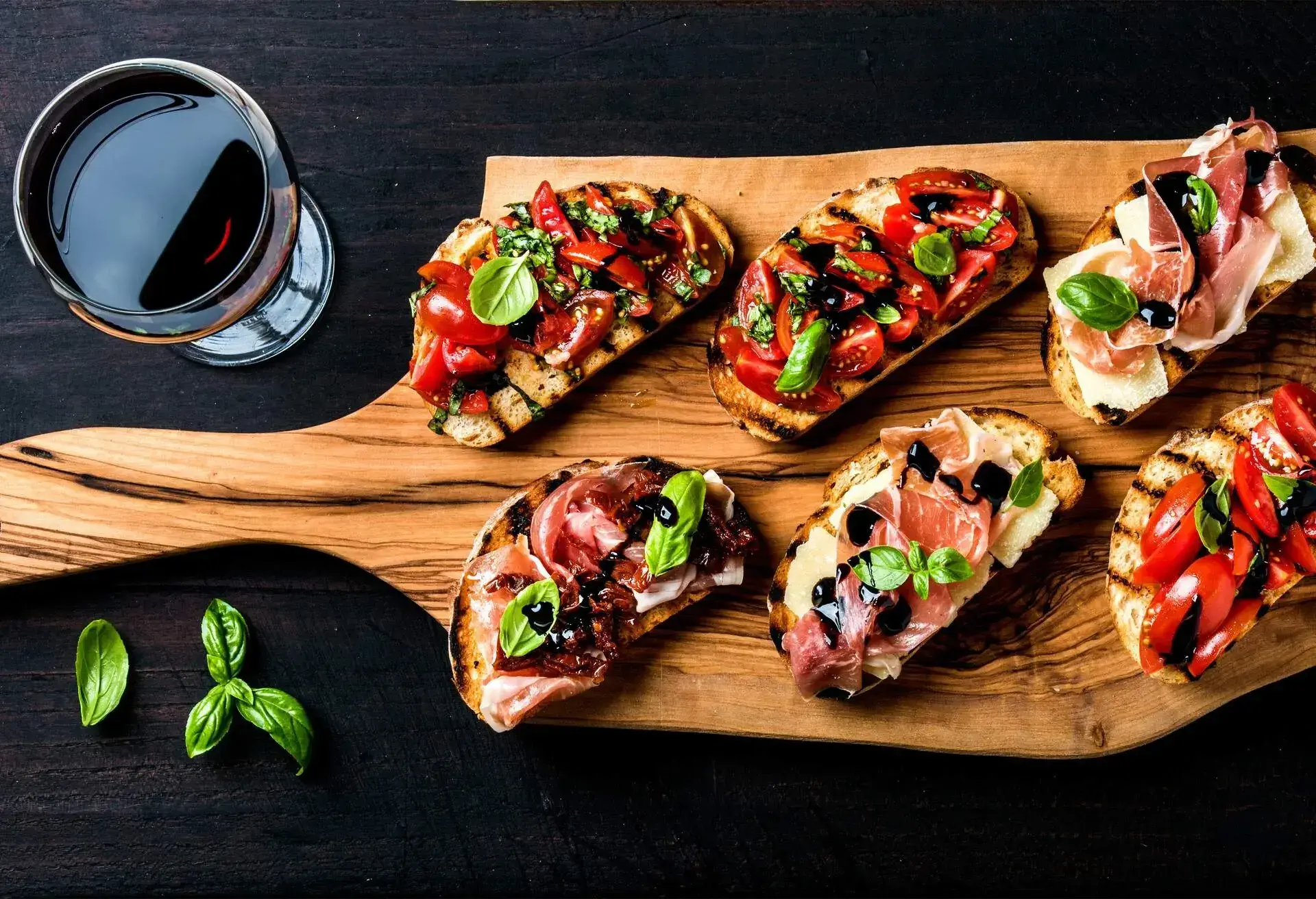
We’ve hardly mentioned anything at all about fruit or vegetables (fried artichokes anyone?) and wines like Chianti are so plentiful to warrant a whole separate list at restaurants. That said, there are a few other dishes that should be mentioned when talking about traditional Italian food. Polenta is as traditional as food gets in Italy, and minestrone generally tops the list of favourite soups. Arancini and bruschetta rank among the best finger foods, while panna cotta joins tiramisu as dolce mainstays for dessert.
We hope this brief guide inspires more tasty adventures in the world of Italian cuisine as you go.
Excited for your next adventure? Our friends at Where to Go, produced by the team behind the award-winning DK Eyewitness travel guides, are here to help!
Each fortnight, hosts James and Lucy talk to local experts about the destination they have chosen to call their home, exploring their personal connection to the place, what makes it so special and the best things to see and do.
Listen to the podcast below for more inspiration and tips from Italy:

